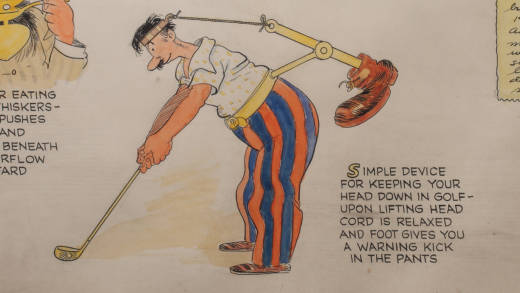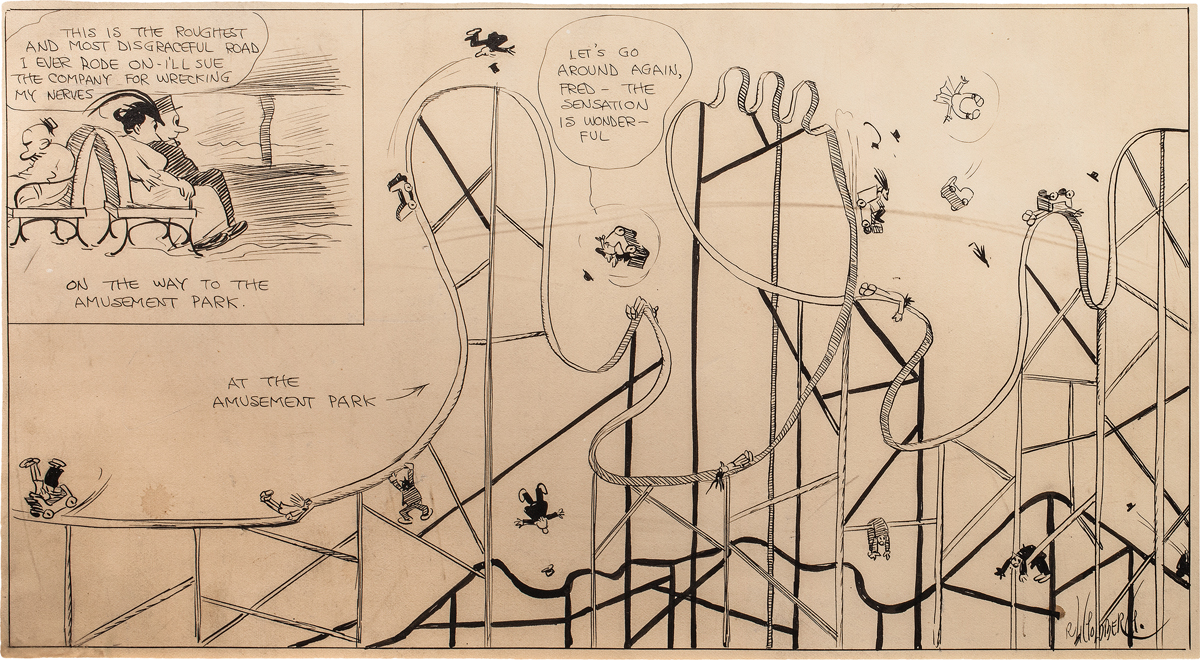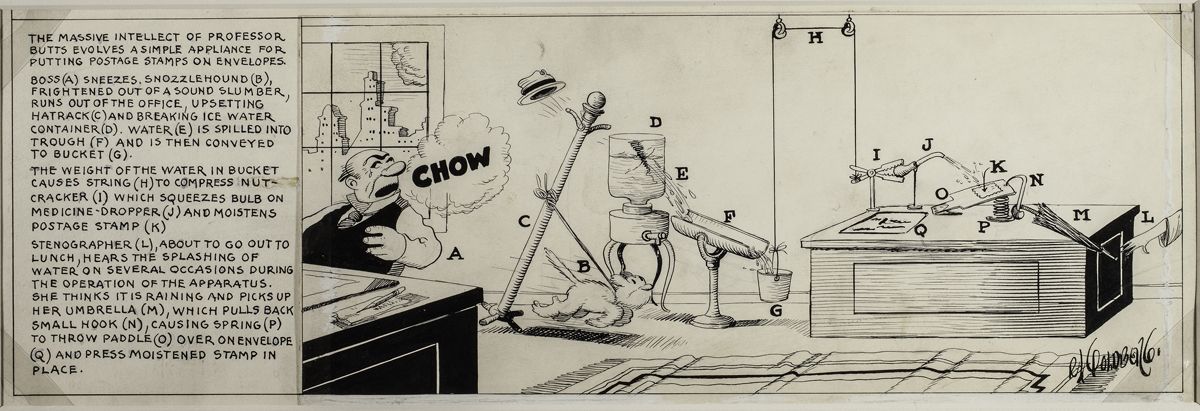It’s not often a cartoonist achieves notoriety of such a level that his or her name comes to stand for something else. Usually their characters live on, their images morphing into decals on cars’ rear windows or their catchphrases forever bringing certain scenes to mind (“good grief”). But the cartoonists themselves?
There’s only one. In 1931, at the age of 48, Rube Goldberg became an adjective in Merriam-Webster’s Dictionary. So popular were his drawings of slapstick contraptions that his name became synonymous with them, defined as “accomplishing by overly complex and humorous means what seemingly could be done simply.” Eight decades after that entry, it remains firmly lodged in our cultural consciousness, thanks to YouTube videos, yearly engineering club competitions and the simple pleasure of using those three syllables to describe zany arrangements of ordinary stuff.
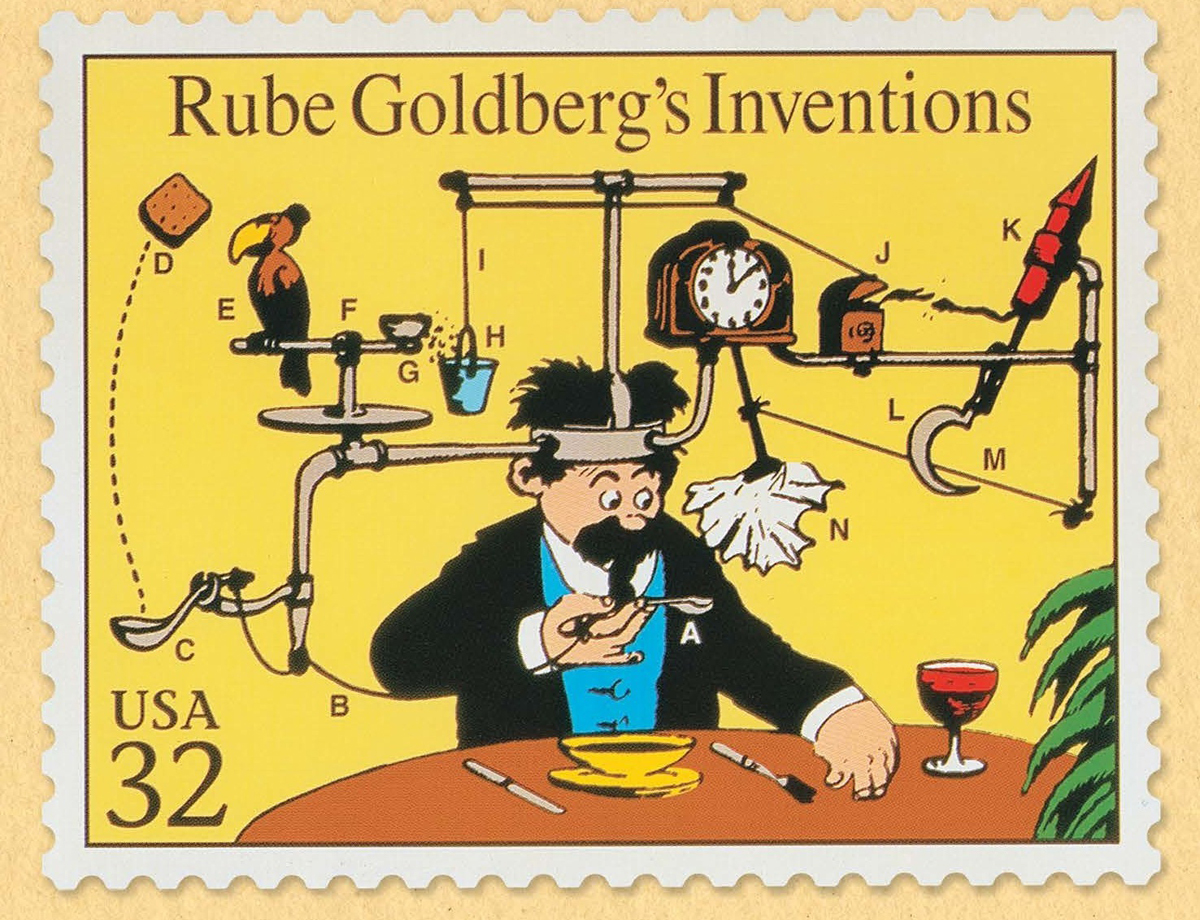
If you’re heading to the Contemporary Jewish Museum filled with dreams of interactive Rube Goldbergian contraptions, I must temper your expectations a bit. The Art of Rube Goldberg, a retrospective of the cartoonist’s life and career, is filled with drawings and sketches, photographs, films, letters and memorabilia, but no moving parts sit within its walls (unless you count a clip of the eating machine, inspired by Goldberg’s drawings, in Charlie Chaplin’s Modern Times).
Goldberg grew up in an established Jewish family in San Francisco, and his trajectory towards an illustrious future (pun intended) can be tracked thusly: Lowell High School, engineering degree at UC Berkeley, putting that degree to use on San Francisco’s sewer system (briefly), San Francisco Chronicle sports cartoonist, followed by San Francisco Bulletin staff cartoonist.
But San Francisco was too small to contain Goldberg’s ambitions. He moved to New York City in 1907, launching his career shortly thereafter with the appearance of Foolish Questions in the New York Evening Mail, a series of panel cartoons inspired by the truism “Ask a stupid questions, get an even stupider answer.”
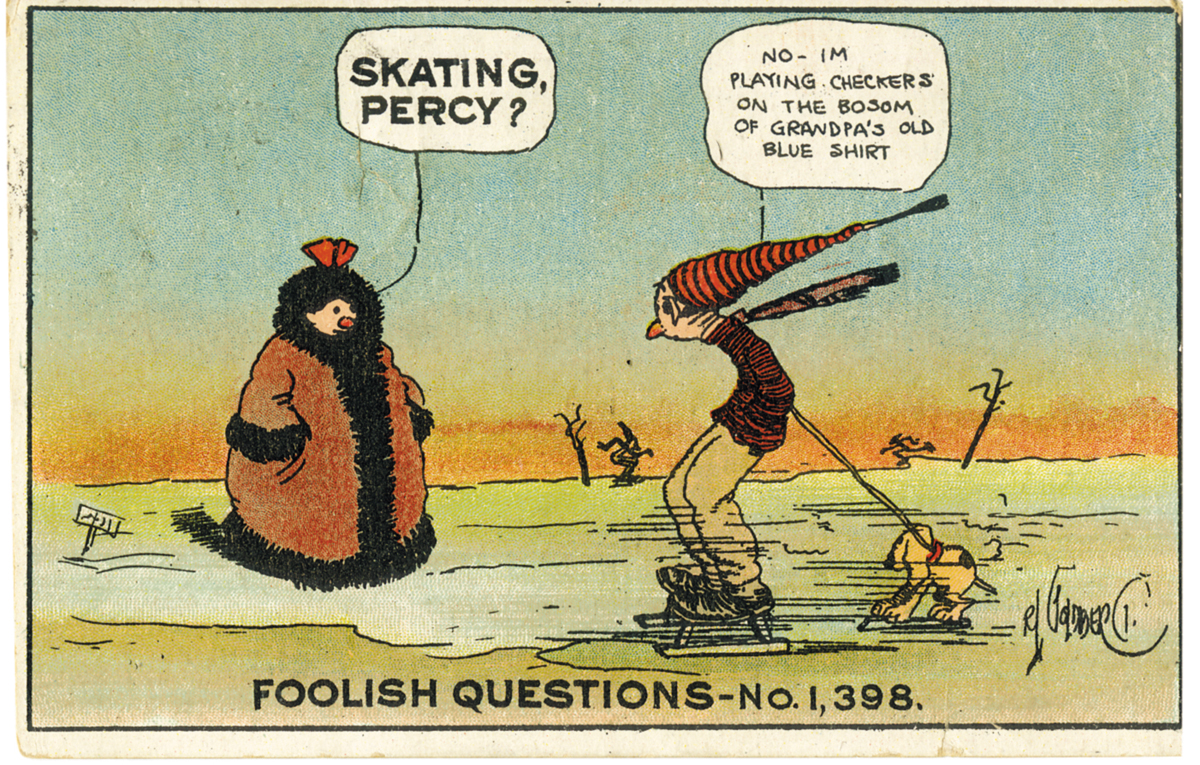
These one-liners from the early days of another century, anchored in the inanity of polite small talk, still elicit a chuckle in 2018. “Skating, Percy?” asks a fur coat-clad woman of an obviously ice skating man. “No — I’m playing checkers on the bosom of grandpa’s old blue shirt,” he replies in Foolish Questions No. 1,398. It’s the kind of hyperbolic sarcastic retort teenagers have honed to a deadly weapon throughout history.
